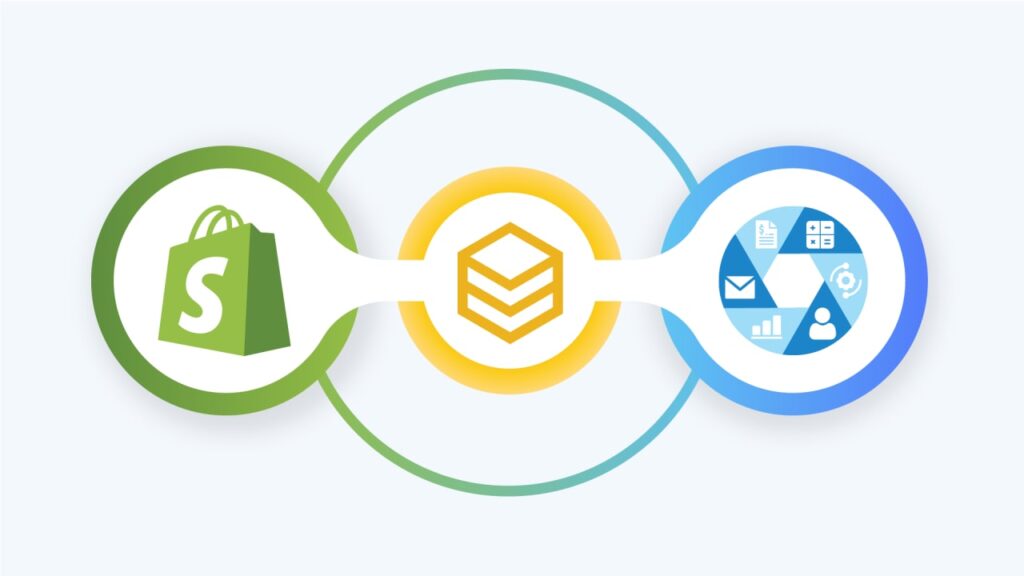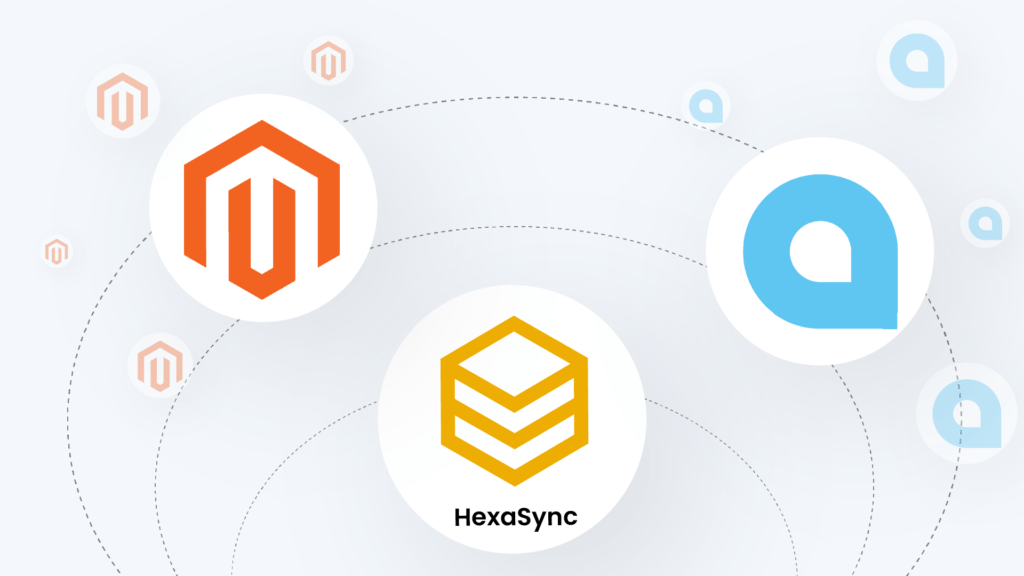Table of Contents
Overview
These days, B2B eCommerce trends are more popular than ever in the field of online sales. To provide the best services to customers, companies have devised plans and strategies to connect applications and systems, optimize business operations. In which, ERP implementation is the top priority strategy.
However, implementing ERP is not easy. Companies have to have a clear and detailed plan. To help you better understand the implementation process, this article focuses on information about the phases of an ERP implementation plan.

What is ERP Implementation Plan?
Before learning about the ERP implementation plan, we need to understand clearly what ERP is. ERP is software used to automate and manage business activities like accounting, sales, marketing, human resources, etc. An ERP system connects your various business processes and allows data to flow back and forth. It eliminates data duplication and provides data integrity. ERP is one of the top priorities in enterprises’ construction and development strategy.
According to Statista, The global ERP software market is forecast to grow to around US$97 billion by 2024. Meanwhile, SAP and Oracle are two of the leading ERP vendors in the market. That proves that the ERP market is growing and widely used in companies.
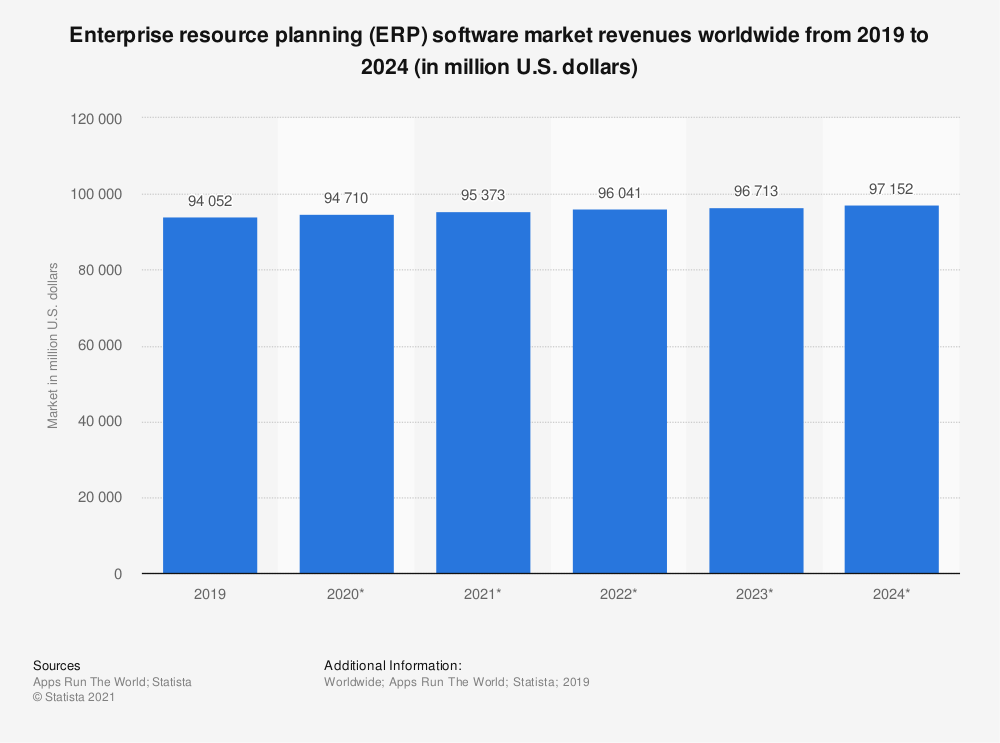
So, what is an ERP implementation plan? ERP implementation includes planning, configuring, and implementing an ERP system. To successfully implement ERP, businesses need to plan meticulously and carefully. That will eliminate unwanted hurdles such as over budget and time, data integration, and technical errors.
ERP implementation planning is the preparation process that includes gathering business requirements, selecting the right software, implementing the system, migrating data, or training users. ERP implementation is more challenging than imagined. Even if you are an expert in the field of ERP, execution will not be easy if you do not plan before.
There are many reasons why ERP implementation is interrupted or beyond scheduled time such as organizational issues (26.7%), scaling (20%), data problems (20%), project timeline(6.7%), technical issues(6.7%), and more. (Statista). Therefore, to ensure a successful implementation, businesses have to schedule the deployment in phases, navigate the steps on schedule, and follow up to each stage.
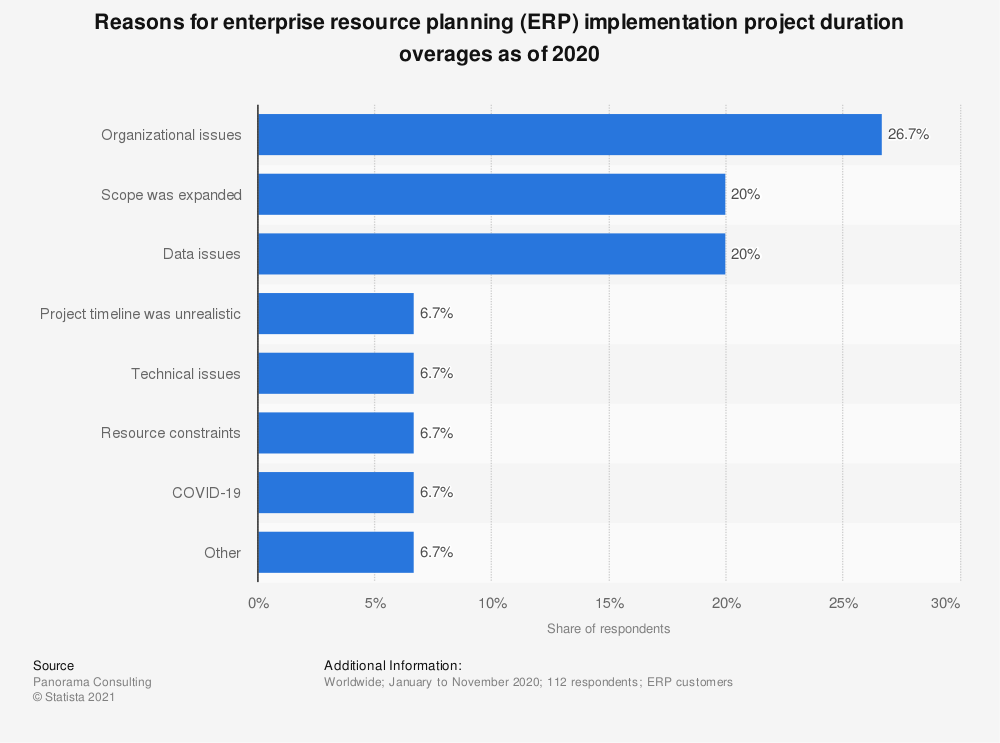
Why You need an ERP Implementation Plan?
It’s hard to believe that 46% of businesses have exceeded their deadlines and global ERP implementation projects have experienced cost overruns is 33%, but it’s true (Statista). Some companies also abandoned project implementation after many delays and change management challenges. That causes businesses to waste costs and have to start from scratch. Not only that, deploying many times without success will make it easy for businesses to give up.
These failures exist because of poor planning. In other words, we cannot underestimate the importance of ERP implementation planning. Slight deviations in the implementation process can cause risks to the project’s success.
For this reason, close and careful planning is the key to a successful ERP implementation. Businesses not only save a lot of time but also deploy on the right budget. If you want to know everything related to ERP such as problems, solutions, ERP integration, business value, and more, the article “global ERP review” will provide it to you.
The Phases of ERP implementation
ERP implementation can be considered the most complex part of the entire process. There are many ERP implementation challenges businesses can face. Because of this, coming up with an ERP strategy is extremely important. Specifically, this strategy is to divide the implementation into several phases. The more clearly defined the goals for each stage, the greater the likelihood of success. Here are the 6 key stages that every business needs to make the deployment go more smoothly:

Researching and Planning
First, organizations need to have specialized knowledge to implement this plan. Businesses can hire outside consultants or ERP software vendors for advice. In other words, businesses learn to know about the design and configuration of an ERP method, its strengths, and weaknesses, and which system would be suitable for their company. During this phase, organizations can select and purchase an ERP system.
Design
During this phase, it is essential to have a detailed understanding and requirements of the workflow to develop a detailed design for the new ERP system. In other words, the organization has to design a new process to take advantage of the ERP system.
Development
When organizations have completed the design phase, the development phase can begin. This phase includes configuring and customizing the software to support the application’s redesigned, integrated development processes. Besides, enterprises also develop training materials to help employees adapt to the new system. Additionally, In addition, businesses also need to plan for data migration during this period.
Testing
First, enterprises need to rigorously test the system’s full capabilities and then test the software’s essential functions. In addition, the enterprise also checks whether the migrated data is correct. User training is also started.
Deployment
Organizations should prepare for potential problems during the implementation phase, such as many moving parts and some confused employees. Thus, the project team must be available to answer questions, help users understand the system, and fix any problems.
Some organizations will deploy all modules of the ERP system simultaneously. Meanwhile, some other organizations focus first on specific high-priority modules or processes and then add other modules. In particular, some organizations also continue to run older systems side-by-side with new ERP implementations for a while to reduce risk.
Supporting and Updating
This phase focuses on listening to user feedback and adjusting the system accordingly. Because some additional development and configuration may be needed when new features are added to the system. Regular ERP system support and updates help keep users happy and ensure the business achieves the desired benefits.
Suppose you are using an on-premises ERP system. In that case, you will have to install software updates periodically and may need, if you have a cloud-based ERP system, your vendor will automatically update the software if you have a cloud-based ERP system.
ERP Implementation with Beehexa
ERP integration is one of the essential steps in ERP implementation. This kind of B2B eCommerce integration brings a lot of functions to organizations. Integrating ERP with other applications makes sales more convenient. Businesses no longer worry about errors caused by manual processes. Moreover, sales speed is faster, brand reputation is also safe, and customers experience better services.
Especially, successfully integrating ERP will create a lot of benefits of the ERP inventory management system. Controlling all processes related to inventory will be simpler. Manual processes will be eliminated, saving a variety of money and time.
There are 3 common ERP integration approaches. The first approach is application program interfaces(API). Second, most ERP vendors have the tools to integrate with other applications or systems. The third ERP integration approach is middleware.
HexaSync Integration Platform is an iPaaS acting as a middleware that seamlessly helps businesses automate operations. Furthermore, our middleware connects disjointed systems to deliver a unified solution to customers. Accessing and sharing data will be more straightforward because HexaSync allows using data in one place. In particular, Beehexa will support your maintenance during your ERP implementation.
Over the years, our HexaSync successfully integrated with many famous ERP software. Acumatica implementation, for instance, is a service that we are providing by consulting and developing on the Acumatica ERP platform. We always strive to find the perfect integrated solution for our customers. Thanks to that, all challenges will be eliminated, especially the costs and data integration.
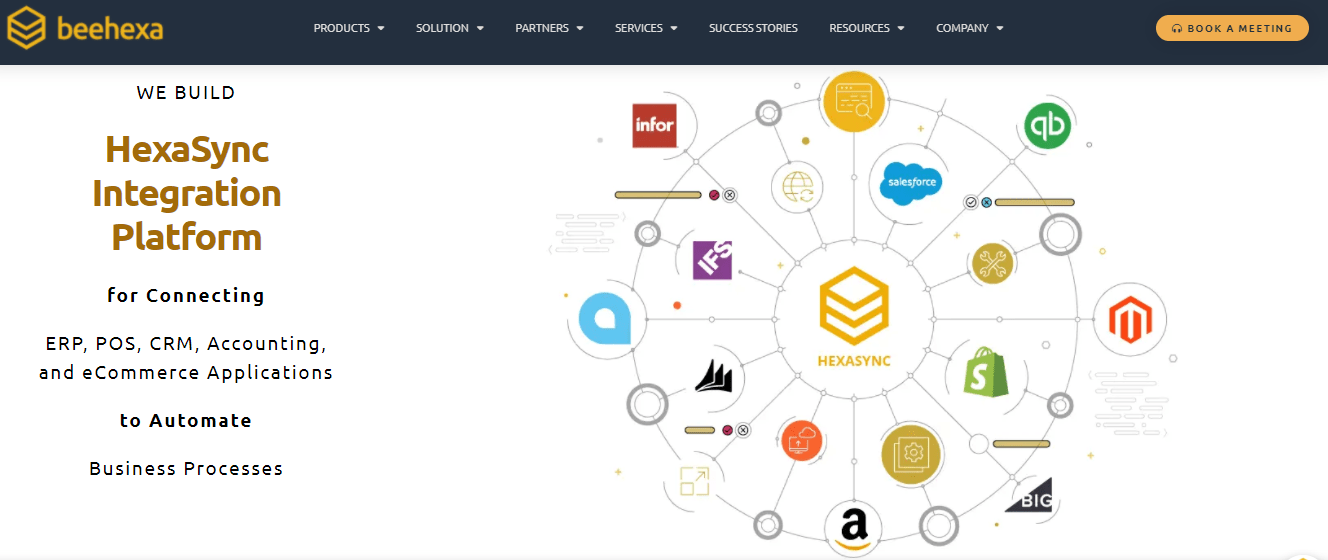
Final words
To sum up, phased ERP implementation planning will optimize your success. We also provide details of each stage and necessary notes through this article for your reference. We hope that your ERP implementation will get a perfect consequence.




